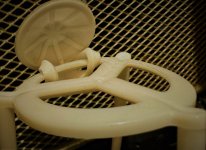signal_line
Silver Member
- Nov 14, 2011
- 3,669
- 1,888
- Detector(s) used
- XP Deus
- Primary Interest:
- All Treasure Hunting
Just saw the new Pathfinder by Tim Williams at lrlman.com I have one of his older units called the Image Tracker. I adapted it to be used with an electronic receiver. Same with EFNMR2015. So I highly suspect this unit could also be adapted for electronic receiver.






